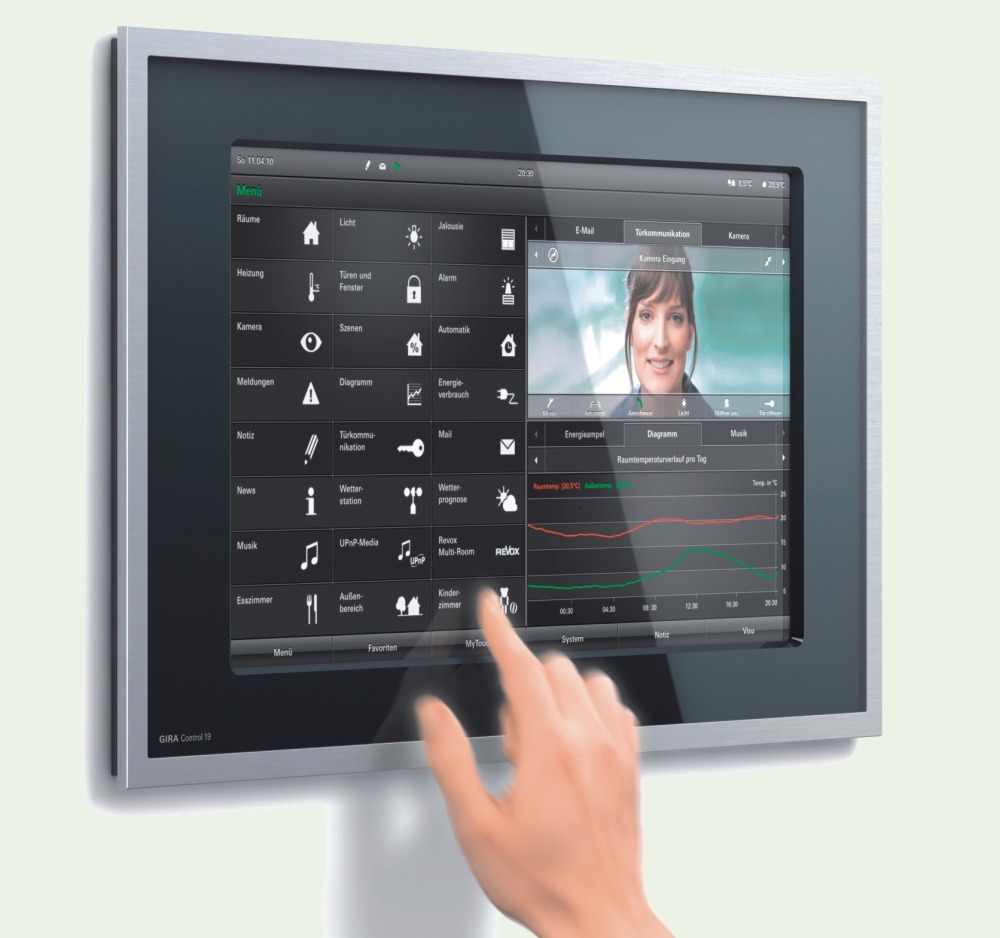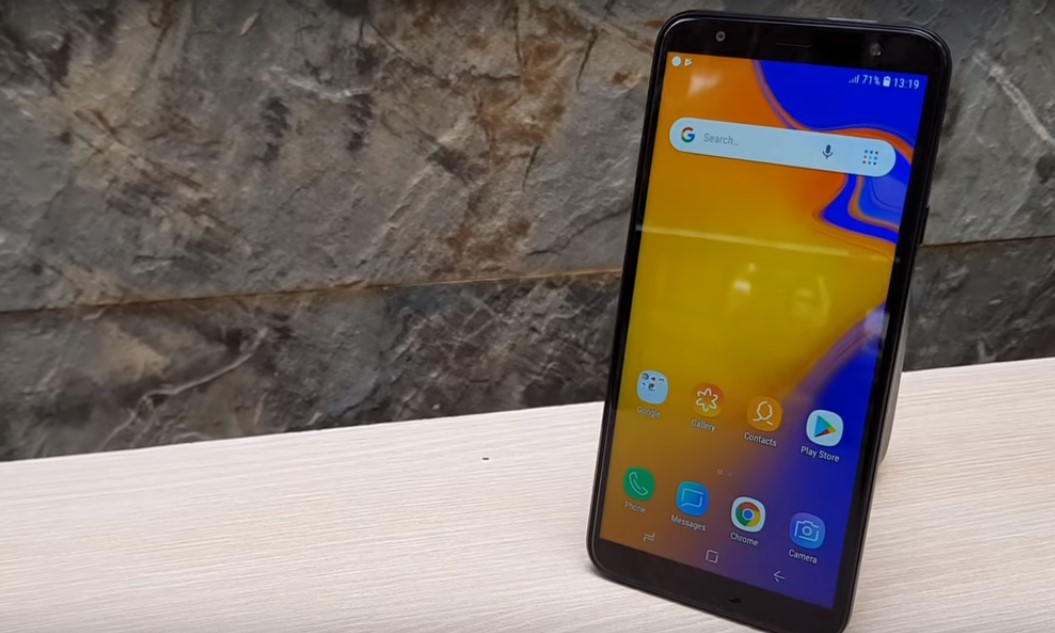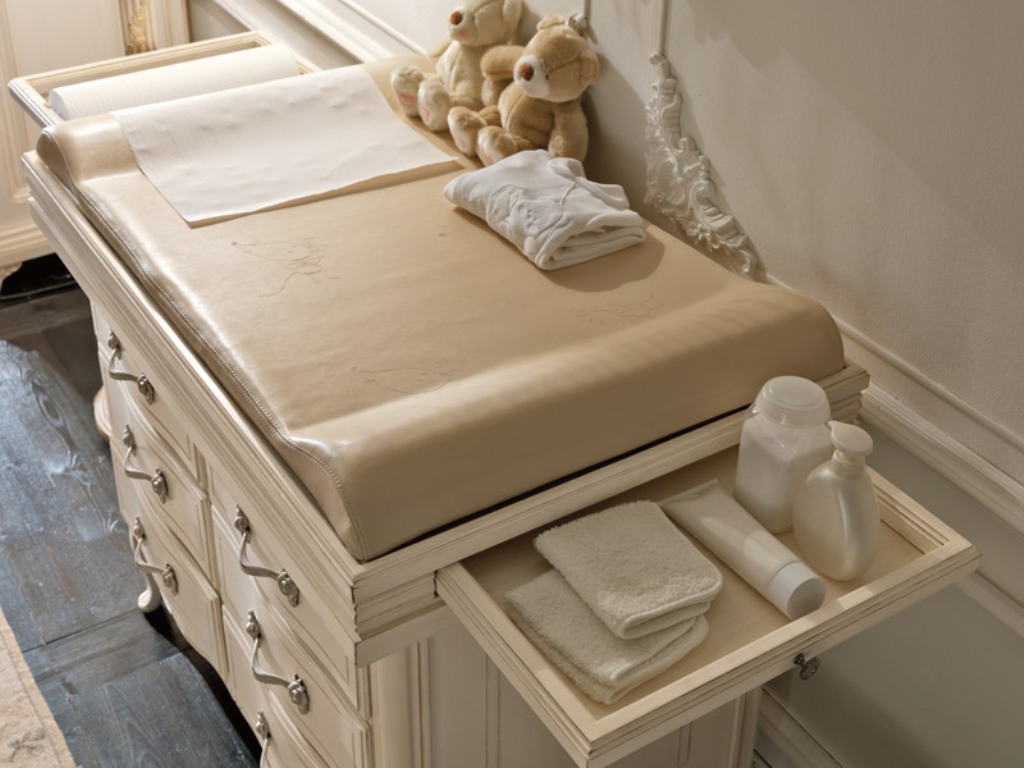Rating of the best operator panels for 2024

The operator panel (can also be called an "operator panel" or "HMI device") is a special computing device of serial or mass production, which is implemented in the form of an industrial controller (but not a computer), in which a human-machine interface is used to control individual automated processes or devices. It can be used both in production and for household needs (for example, “Smart Home” control).
Design features
An HMI device is usually a flat front structure with controls or a display. Often, this element is protected from the negative effects of the external environment or mechanical damage (protective film, shock-resistant facade, etc.). The panel itself does not have a great depth, which allows it to be placed both on a large production operator panel and on a home wall or some surface of the controlled apparatus.
The internal structure of the panel, by and large, is similar to that of an industrial computer, with the only difference in operating conditions and focus of specialization.

A typical panel includes:
- Means of visual information output: modern models have a touchscreen graphic or text screen; in the old days, all kinds of electronic displays and indicators were used, even earlier this function was performed by groups of lamps or LEDs. The peak of popularity fell on the models with liquid crystal displays.
- Means of technical input and data selection, responsible for navigation through the available functions: separate buttons, full keyboard, touch screen. A joystick or other manipulator (from mouse to trackball) can also be used.
- Connecting interfaces used for receiving / transmitting input / received data between the panel and controlled devices. This includes any network equipment - from a wired network to a modem (examples are RS485, RS232, Ethernet, RS422).
- Additional devices: a drive for storing an operating system, software, volatile random access memory, non-volatile read-only memory (hard disk or flash memory).
Main functionality
The operator panel provides the following functionality:
- Visual representation of the controlled process (or object) and its current parameters in the form of text or graphics;
- Processing and management of emergency messages / notifications, in which the time and date of their occurrence is recorded;
- Input of procedural parameters and direct control by means of a touch screen or function buttons;
- Data transfer with peripheral equipment or system;
- Selection of loadable scenarios for the controlled equipment and the ability to edit them;
- System administration of user rights in the form of imposing restrictions on the actions of unauthorized persons (for example, a ban on showing “adult channels” by television receivers in the Smart Home without entering a secret password);
- Displaying trends and statistical diagrams, showing summary reports on the operation of monitored devices ("history of use");
- Archiving of accumulated data (rather, more is needed for industrial processes);
- Execution of previously set commands on a schedule (for example, turning on automatic floor heating at a certain time);
- Printout of selected information.
If the panel is in text mode, then all processes are displayed as character data. For the graphical mode, visualization occurs through icons or mnemonic diagrams. Hence, it can be seen that the last mode is the most visual and convenient, therefore the first (text) is usually used in small automated systems, which do not require permanent and close control by the user (these include a single alarm system and locks on all doors in a private house ).
Interaction with controlled equipment
As a rule, the operator panels themselves in automated systems do not independently control the controlled elements, but only perform the function of issuing commands. In order to obtain data on ongoing processes, they exchange data with controllers that are installed directly on the equipment performing a certain process via a network (for example, a SCADA system).
For clarity, it is worth giving the following example: a command is sent from the common control panel "Smart Home" to turn on floor heating at a specified time. This command is received by the controller installed in the floor convector and executed at the right time, including heating the heating elements in the "subordinate" device.

Thus, there can be one operator panel and several connected controllers. At the same time, it is not necessary that all this equipment must be of the same model or from the same brand. As a result, the HMI device is responsible for starting / stopping the controlled systems, selecting their operating mode, entering new operating scenarios, online monitoring of the process, displaying current data about the process and logging them.
Also, the “controller-panel” system can be used, in which the controller is endowed with broader powers, and the equipment subordinate to it dispenses with commands from the panel or the participation of the operator. In industrial systems, multi-level control chains can be used, where several HMI devices can be subordinate to a master control panel with extended access rights. Usually a so-called Industrial Ethernet network is used for this in production. At the household level, multistage systems are almost never found.
Existing types of HMI devices
For domestic use, two types of similar equipment are usually used:
- Graphic, text-graphic and push-button - they focus on the main management functions, and not on the visualization of processes. Budget models are often equipped with a monochrome screen. Data entry is made by means of keys (this is convenient for hazardous industries, when the operator must work with gloves. At the household level, this factor is clearly redundant).Despite the seeming simplicity of this type of operpanels, they are convenient to use in houses where the control functionality is small, as well as for the needs of warehouses, water treatment systems, boiler control systems in apartment buildings, and this will also be relevant for pumping stations.
- Sensory - in these devices it is much more convenient to program controls and graphics for the necessary technological tasks. Modern touchpads are capable of delivering lifelike images in HD resolution.
Hardware
The hardware architecture of the HMI device is made similar to standard personal computers, only in most cases flash memory is used instead of a hard disk (due to the dimensions of the latter). Standard hardware solutions include:
- 32-bit RISK processor;
- SDRAM RAM (not very large);
- Flash-EEPROM memory (built-in), where the operating system and accumulated user information are stored;
- Various expansion ports and interfaces for connecting external devices.
In terms of hardware complexity, HMI devices can be arranged in the following gradation (from worst to best):
- Button panel - controlled by physical buttons, information is supplied on indicators or an LCD screen.
- Text display - is a panel with visual display of information in the form of mnemonic diagrams or text. The program itself can be executed directly in the panel, or simply immediately transferred to the desired controller.
- Graphic panel - the same as the previous one, only text and mnemonic diagrams are replaced with drawn pictograms;
- Touch panel - has a pressure-sensitive display, through which data is entered and information is displayed at the same time;
- An industrial computer - most of all looks like a modern server, but, as a rule, it has a specialized interface and is permanently connected to the industrial network. Its body is usually protected from harmful influences.
Software
Standard software for operpanels includes:
- An operating system that is open to external reprogramming - alternatively Linux, Windows CE, iOS or Android;
- A possible replacement for the above OS can be firmware from the manufacturer (the so-called "proprietary OS" or firmware);
- Software for the development of visualization projects, scripts, task schedules.
Main characteristics
The most important characteristics for an operator panel will be:
- Display size and appearance - the size can vary from a modest 128x128 dpi to an impressive 1024x768 (and even more). The number of colors displayed by it can be calculated from 2 (monochrome) to 16 million (24 bits). These parameters significantly affect the usability.
- Organization of control - a transparent touch display (capacitive or resistive) can be used in conjunction with physical buttons or manipulators, which are located on the front. And also a fully touch screen can be used, from which control is directly carried out. However, there are no completely touch screens - the manufacturer always builds a physical emergency stop button for all processes into the case.
- The number of built-in network interfaces and communication protocols used - their number will depend on the capabilities of the installed operating system. Profibus DP, Industrial Ethernet or Modbus RTU / TCP can be used as a standard.
- The established degree of protection - for the front part it is the European standard IP65, for the rest parts - IP20. However, there are samples in which all parts are protected according to the IP67 standard - this may be due to installation difficulties.
- The responsiveness of the integrated flash memory and the speed of the processor - these characteristics affect the speed of processing and data transfer.
- The type of matrix used in the sensor - this parameter will determine the accuracy of the cursor on the screen, the sensitivity of pressing and the response time to it.
General overview of products from popular manufacturers
SIEMENS
The brand offers a wide range of products. Oddly enough, the company specializes in the production of the simplest budget devices of the BASIC series, designed for simple visualization. More complex samples include the "Comfort" line.
Simple push-button devices save about 60% of installation and connection time. At the same time, they are not certified in all countries as computer control devices. But the "Comfort" line has a fully recognized international certificate.
Each lineup contains both wired and wireless samples. However, SIEMENS is more focused on the production of devices for use in harsh industrial environments.
ONI
Commercially available samples with both touch and text displays. All equipment is supplied with its own software - "ONI-VisualStudio". It easily visualizes the specified processes, while applying high-quality visual graphics, animation elements. You can also use scripts, macros and schedules pre-created by the company for the most common processes. A feature of this brand's products can be called the fact that it also produces open-frame models of the "OEM" series, which are easy to integrate directly into a wall or panel of controlled equipment. However, both traditional plastic and metal are used equally in all lines.
WIELAND
A highly reputable German brand with more than 100 years of history - it started with the production of relays, terminals, electrical switches. He distinguished himself by the fact that in 2018 he launched a line of touch control panels that worked in an extended temperature range - from +60 to -10 degrees Celsius. Previously, it was believed that the specified limits for sensor samples could not be achieved. Almost all of its models are equipped with a reinforced IP66 protection class. Any panel can inform about the state of the technological process not only by displaying information on the screen, but also by e-mail and SMS. The entire range is characterized by "multilingualism" - almost all panels are compatible with other manufacturers. This was achieved through the conclusion of partnerships with more than 40 other manufacturers of similar products.
Rating of the best operator panels for 2024
5th place: OMRON NT2S
It is one of the smallest and simplest HMI device models that can be programmed. Equipped with a four-line LCD screen and six function keys. The casing is IP65 rated. Additional functions include a real time clock and the ability to connect a printer. The sample has a shallow installation depth, which makes it extremely easy to integrate the support panel on almost any surface.

| Name | Index |
|---|---|
| Manufacturer country | Japan |
| Guarantee | 2 |
| Display type | Liquid crystal |
| Additional functions | Shallow installation depth |
| Price, rubles | 3500 |
- Economical solution;
- Compact dimensions;
- Reinforced hull protection.
- Small functionality.
4th place: OMRON NT31
Programmable terminal with color four-line display. It has a parallel port for connecting a printer, and a port for connecting a laptop of previous generations (meaning PDAs from Macintosh). For the convenience of reading information from the touch screen, the device is equipped with LED backlighting, designed for at least fifty thousand hours of operation. The set includes proprietary software for standard needs.

| Name | Index |
|---|---|
| Manufacturer country | Japan |
| Guarantee | 2 |
| Display type | Sensory |
| Additional functions | Backlighting via LEDs |
| Price, rubles | 8000 |
- Configurable function keys;
- The ability to connect external devices;
- Own software.
- Large installation depth.
3rd place: SIMATIC BASIC PANEL KTP700
A combined device that combines both push-button and touch controls.It has a seven-inch screen with increased color rendering (sixty-five thousand colors). Runs on the Windows CE operating system plus contains free proprietary open source software that allows you to program the device to control almost any process.

| Name | Index |
|---|---|
| Manufacturer country | Germany |
| Guarantee | 3 |
| Display type | Touch and button |
| Additional functions | Changeable software |
| Price, rubles | 45000 |
- Customizable software;
- Extended warranty;
- Increased color rendering.
- Small display for high color screen.
2nd place: SIMATIC COMFORT PANEL KP700
Multifunctional instrument with large format full touch screen. Provides output of sixteen million colors. Supplied with the latest versions of Windows CE only. It uses the standard PROFINET and MPI / PROFIBUS DP interfaces for control, which are compatible with many third-party controllers. The software is open source. The device has its own 12 MB flash memory.

| Name | Index |
|---|---|
| Manufacturer country | Germany |
| Guarantee | 3 |
| Display type | Sensory |
| Additional functions | Built-in flash memory |
| Price, rubles | 85000 |
- Own flash memory;
- High resolution touch screen;
- Editable software;
- Improved hardware compatibility;
- Works with the latest versions of Windows CE;
- Actual price / quality ratio.
- Not found.
1st place: Weintek eMT3150A
Powerful HMI device with large display (fifteen inches) and excellent graphical color reproduction at twenty-four bits. The casing is protected from all sides to IP66. The model has several parallel ports for connecting external devices, as well as a USB port. Capable of transmitting data wirelessly. Functional working temperatures - from +60 to -20 degrees Celsius. Additionally, the Samos Pro Compact emergency safety controller is built in.

| Name | Index |
|---|---|
| Manufacturer country | Germany |
| Guarantee | 2 |
| Display type | Sensory |
| Additional functions | Security controller |
| Price, rubles | 110000 |
- Customizable software;
- Improved touchscreen display;
- Additional safety controller.
- High price.
Instead of an epilogue
Due to the fact that the described devices are technically complex and expensive, the only way to save on the price is to order them directly from the manufacturer. However, in this case, it is worth remembering that a computing device imported into the territory of the Russian Federation must undergo mandatory certification. Fortunately, it is almost impossible to find an operpanel (except for Asian designs) that does not have an international certificate recognized by the Russian Federation. Thus, the cost of ordering via the Internet will differ significantly from the retail price. At the same time, practice shows that the price of the same device included in the estimates of Russian firms for the arrangement of the Smart House will be overstated by at least 25 percent.
new entries
Categories
Useful
Popular articles
-

Top rating of the best and inexpensive scooters up to 50 cubic meters in 2024
Views: 97661 -

Rating of the best materials for noise insulation for an apartment in 2024
Views: 95022 -

Rating of cheap analogues of expensive medicines for flu and colds for 2024
Views: 91751 -

The best men's running shoes in 2024
Views: 87681 -

Top ranking of the best smartwatches 2024 - price-quality
Views: 85091 -

Best Complex Vitamins in 2024
Views: 84801 -

The best dye for gray hair - 2024 top ranking
Views: 82406 -

Rating of the best wood paints for interior use in 2024
Views: 77202 -

Ranking of the best action cameras from China in 2024
Views: 75269 -

Rating of the best spinning reels in 2024
Views: 74827 -

The most effective calcium supplements for adults and children in 2024
Views: 72463 -

Top rating of the best means for male potency in 2024 with a description
Views: 68296









